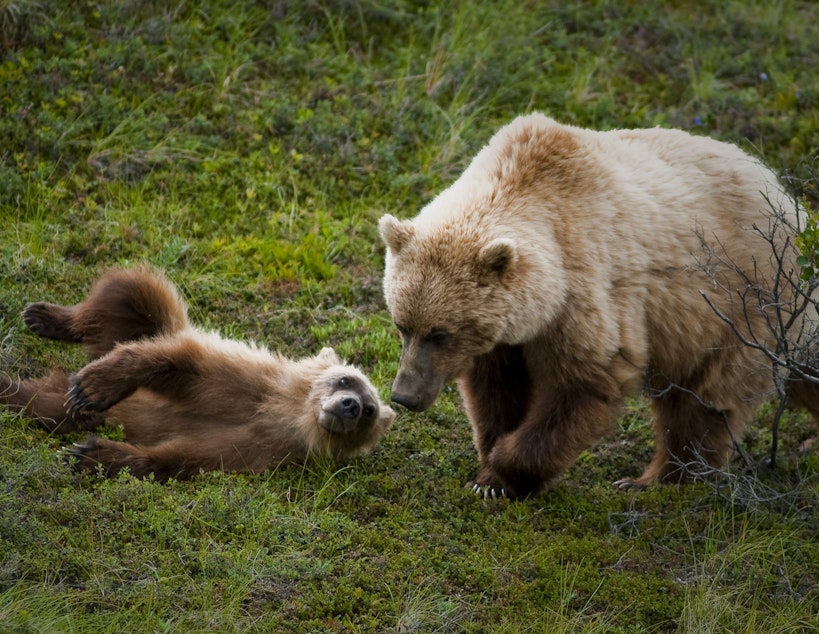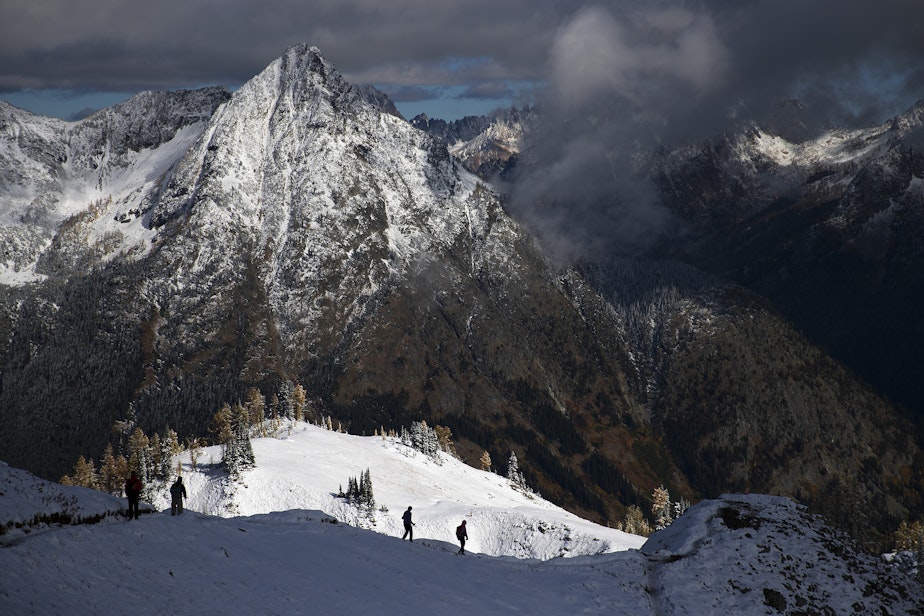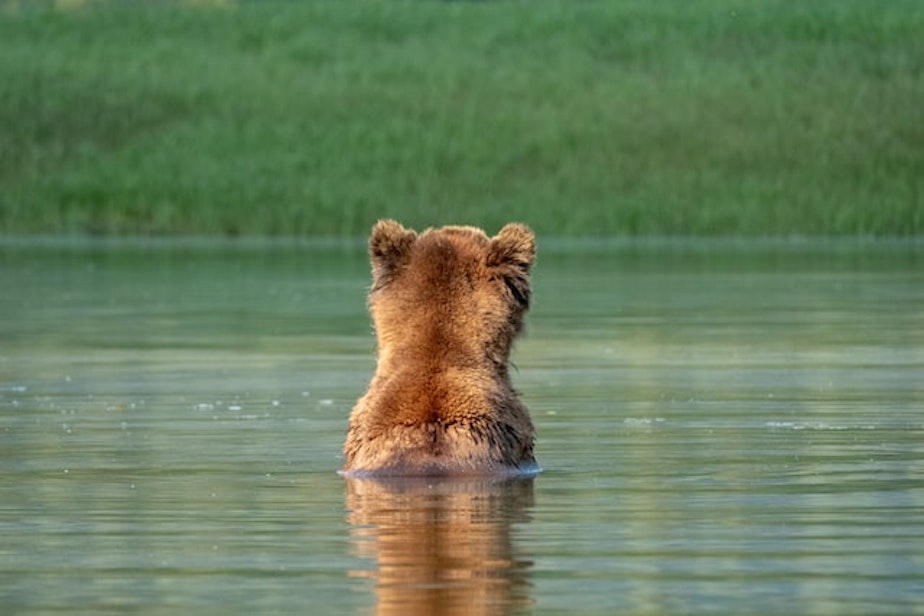Coming soon: Grizzly bears to the North Cascades

Grizzly bears will be reintroduced to North Cascades National Park, federal officials announced Thursday.
Wildlife biologists plan to airlift three to seven bears each summer into the rugged wilderness northeast of Seattle from healthy populations in Montana, Wyoming, and British Columbia. The goal is to build an initial population of 25 bears after a decade, growing to 200 bears by the end of the century.
The bears are to be treated as an experimental population, with agencies allowed to shoot bears to protect public safety, livestock, or property despite the animals’ protection under the Endangered Species Act. Members of the public are allowed to shoot bears in self-defense.
Grizzlies provoke strong reactions: More than 12,000 people provided public comments on the folly or wisdom of restoring the apex predators to one of their former strongholds.
RELATED: Many people in Okanogan County say ‘don’t bring in’ grizzlies
Scott Schuyler, policy representative and elder with Upper Skagit Indian Tribe, called the reintroduction a once-in-a-lifetime opportunity.
Sponsored
“We were once feared, too, as part of the landscape,” he said in an interview. “We were forcibly removed from the landscape from our ancestral area. So that unique connection that we have with not only the bears, but other creatures, puts us in this position that we're going to always speak and defend these creatures.”
“The tribe has thousands of years of coexistence with these creatures, the grizzly bear,” Schuyler said. “Our survivability is forever connected to these creatures too. They're a window into to our future.”

Sauk-Suiattle Tribe chairman Nino Maltos II told federal officials in November his tribe opposes grizzly reintroduction because it would harm tribal members’ ability to harvest traditional foods like salmon and berries.
“For our members to compete with dangerous animals for the resources they were promised to have access to as long as the rivers shall flow is deeply unfair and dangerous—not only to our People but to the many citizens of the Pacific Northwest who utilize the North Cascade Mountains for camping, hiking, sightseeing and commercial activities,” Maltos wrote.
Maltos warned that the Sauk-Suiattle Tribe “does not hesitate in initiating litigation” to protect its treaty rights to salmon and other resources.
Sponsored
RELATED: Study: North Cascades grizzlies could gain more habitat as the climate warms
Rural residents near the North Cascades say the bears could endanger hikers and farmers and that the public safety risk is too great.
“There could be a lot of conflict with orchards and cattlemen,” Okanogan County Commissioner and farmer Andy Hover said. The grizzlies could easily venture into the lowlands on either side of the Cascades mountain range, the so-called “Cascade Curtain” that separates Western and Eastern Washington, in search of food, Hover said.
“We live with black bears all the time,” Hover said. “Grizzly bears are just different creatures, right? If they get upset, and you're in their territory, they're going to want to come at you.”
“Any time there is a human injury, it's certainly a tragedy, no doubt about it,” U.S Fish and Wildlife Service biologist Wayne Kasworm said. “But, given the numbers of people we have in Yellowstone Park and Glacier National Park and the numbers of bears we have there, human injury is a pretty rare occurrence.”
Sponsored

Kasworm, a grizzly specialist in northwest Montana, said he urges people in grizzly country to carry bear spray and take measures to avoid bear encounters, including securing their food and garbage from prying claws.
Before fur traders and hunters decimated grizzly populations in Washington state in the 19th century, grizzlies had abundant salmon to eat. That protein source is no longer so readily available in the North Cascades.
Kasworm said that shouldn’t be a big problem for 21st-century grizzlies.
“There are lots of other foods that bears feed upon,” he said. “We have grizzly bears and healthy populations out here in Glacier Park in Montana, the Bob Marshall [Wilderness], the Cabinet Mountains, and we don't have salmon.”
Sponsored
RELATED: Should grizzlies be brought back to the North Cascades? 'Wild' listeners weigh in
The once-dominant mammals have not been seen in North Cascades National Park or nearby wildlands in Washington state since one was spotted west of Glacier Peak in 1996, according to the U.S. Fish and Wildlife Service.
Widespread media coverage ensued after a hiker photographed what appeared to be a grizzly bear on a mountainside near Cascade Pass in 2011, but it was later confirmed to be a black bear.
Thursday’s decision from the National Park Service and the U.S. Fish and Wildlife Service comes after a half-century of planning and debate over the desirability of bringing back the apex predators of the West. The bears were officially protected as a threatened species south of Alaska in 1975.




